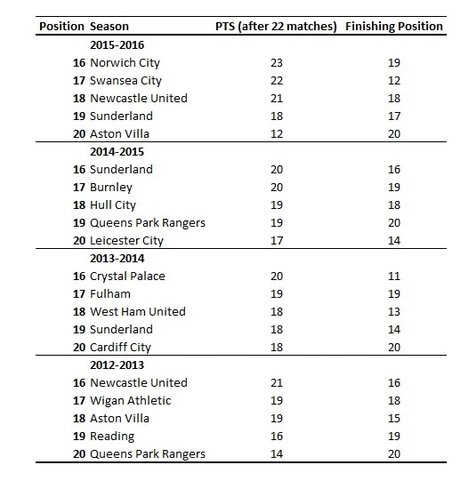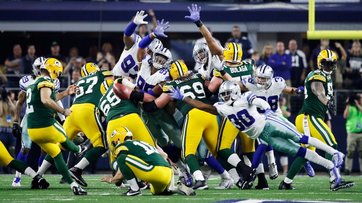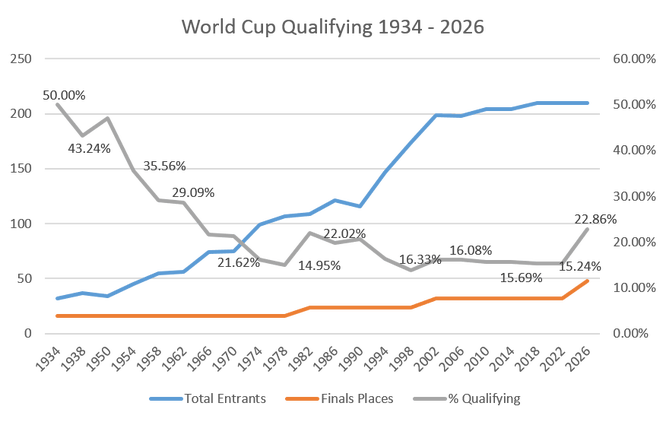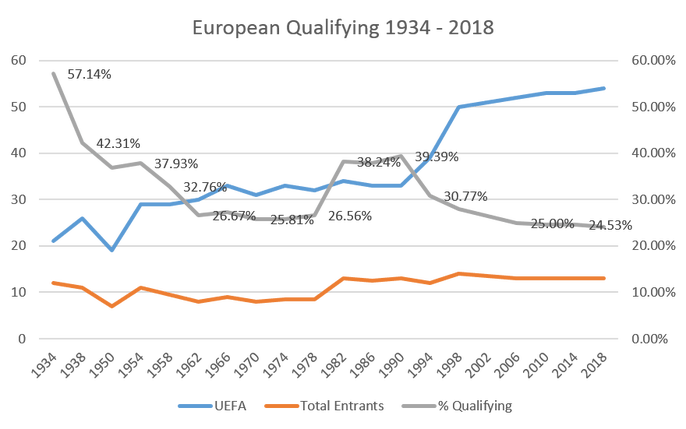The 2017 winter transfer window closes next Tuesday, January 31 at 11pm. The common argument is that January is a bad time to do business for clubs. This could be due to their weakened bargaining power. Clubs with clear ambitions are often in the market for new talent. Avoiding relegation or achieving a top 4 spot for instance might attach a premium to a player.
While elite Premier League clubs can do business in January, usually this window provides struggling ones an opportunity to bring in new players to face a potential relegation battle. The quick analysis below provides an overview of the last four winter windows for the bottom five clubs at this stage of the season (after 22 matches). I’m assuming that these are the clubs most likely to search for new talent in an effort to avoid relegation.
Given the complexity of modern transfers and the fact that many fees are undisclosed, I don’t go into specific net spends in January. The loan move is the most popular choice of transfer for these struggling clubs. Perhaps contrary to popular belief, the majority of transfers the lower end clubs engage in during the winter window are outward ones. They commonly ship fringe and reserve team players out on loans to lower league clubs. Also, I'm sure resources have to be freed up before any potential target can be acquired.
Bringing in a host of new faces doesn’t seem to be a silver bullet for clubs stuck in the relegation fight. That said, there doesn't seem to be any clear relationship here as often when clubs do very little inward business they also go on to be relegated. Maybe an investment threshold exists, both in terms of transfer spend and the capacity to pay more wages. Reaching this level might be out of many clubs reach however.

Last season, almost resigned to relegation, Aston Villa did very little business in January. Sunderland brought in Kirchhoff, N'Doye and Kone. They just survived relegation. Newcastle’s inward business of Saivet, Townsend, Doumbia (loan) wasn’t enough to save them. Despite bringing in many new faces in January, Norwich were still relegated. The Canaries brought in a range of players including Bamford (loan), Grabban, Klose, Naismith and Jarvis.
2014-2015
Very few January inward moves occurred. Sunderland notably brought in Defoe, which probably helped them survive. Burnley (Keane), Hull (Luer) and QPR (Zarate) only brought in one player each and were all relegated. At this stage of 14/15 Leicester were bottom of the table, they did three pieces of inward business in January and survived, Schwarzer (free), Smith (loan) and Kramarić.
2013-2014
13/14 was the most active of recent years for struggling clubs. Fulham brought in no less then seen players but it wasn’t enough to avoid relegation; Dempsey (loan), Kvist (loan), Cole (loan), Heitinga (free), Holtby (loan), Mitroglou, Tunnicliffe. West Ham brought in six; Gordon, Johnson (loan), Borriello (loan), Nocerino (loan), Razak, Armero (loan). Cardiff were bottom at the time and remained bottom, they only brought in one player Wolff Eikrem.
2012-2013
Wigan spent no money bringing in Henríquez (loan), Espinoza (free), Robles (free) and Scharner (loan) but were relegated. Aston Villa did very little business but survived. Despite buying Loïc Remy, QPR still finished bottom. Reading brought in four players ( Carriço,, Akpan, Kelly, Blackman) but it wasn't enough to keep them up.




 RSS Feed
RSS Feed